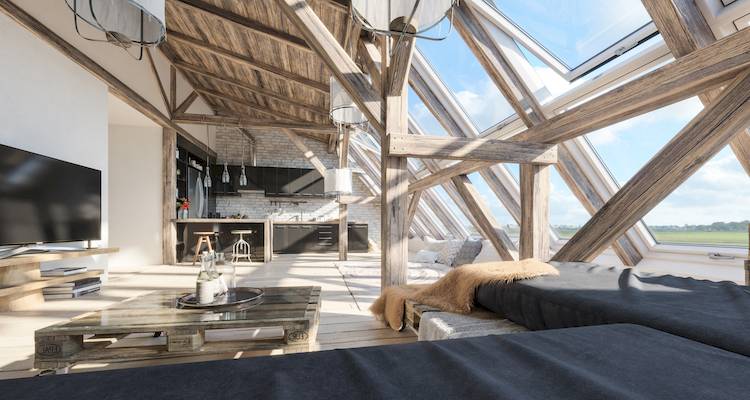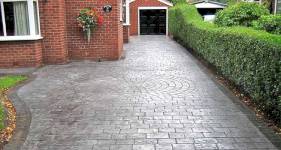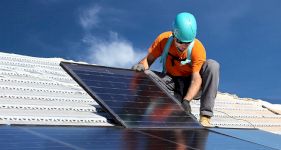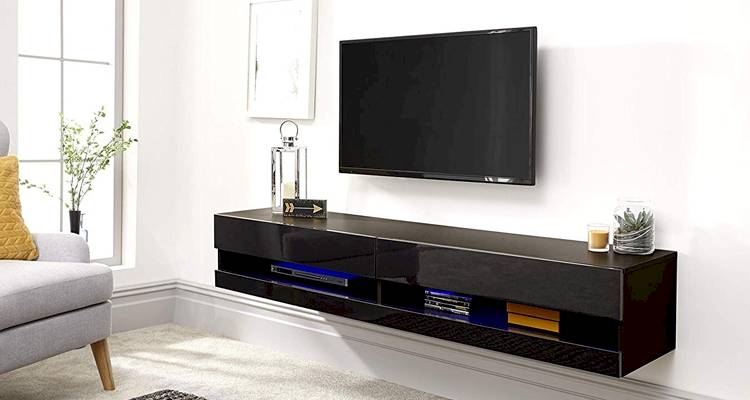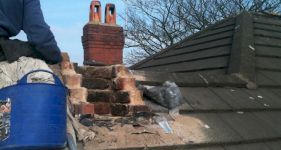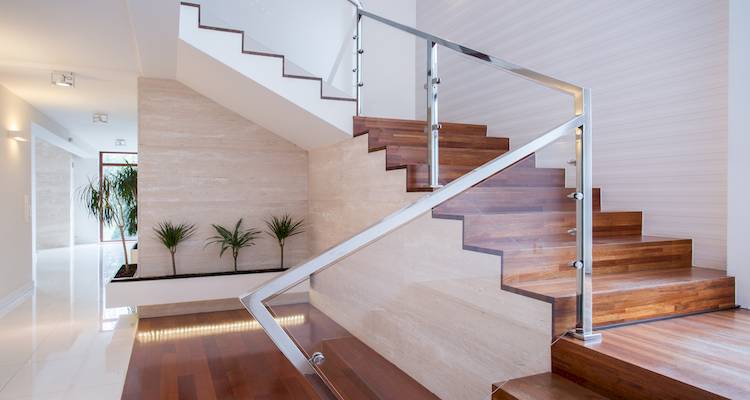Fireplace Installation Cost
- The average cost of installing a fireplace is around £500.
- A standard installation typically takes 2 to 3 hours.
- Explore the installation costs for gas, electric, and wood-burning fireplaces.
- Learn about the different types of fires and important safety regulations.
- Easily find local fireplace installers on MyJobQuote.
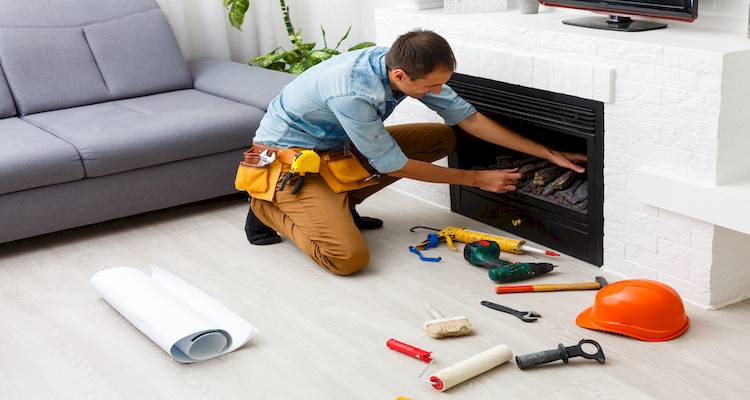
£500
Table of Contents
- How Much Does It Cost to Install a Fireplace?
- Fireplace Installation Costs (Supply Only)
- Fireplace Installer Cost & Timescales
- Factors That Impact Fireplace Installation Costs
- Additional New Fireplace Costs
- What's Involved in Installing a Fireplace?
- Can I Install a Fireplace Myself?
- Building Regulations & Planning Permission for a Fireplace Installation
- Types of Fireplace Installations
- Checklist: Hiring a Fireplace Installer in the UK
- FAQs
How Much Does It Cost to Install a Fireplace?
Fireplaces give any home a warm, cosy focal point. A fireplace installation can lower your home heating costs while also increasing the value of a home.
However, fireplace installation may involve gas or electricity. For this reason, it's critical to hire a professional from a reputable heating company to prevent hazards.
Depending on the type of fire you've chosen for your home, some installations may necessitate completely clearing out the walls in the area where the installation will take place. In addition, the cost of installing a fireplace will be affected by the addition of running gas lines or proper ventilation.
The average cost of installing a fire in your home will vary depending on the type of fire you select, the size of the fire, and your placement in the United Kingdom. If additional pipework is required, this may result in additional costs.
The labour costs for installing a fire in your household are generally around £50 to £100, and a standard installation takes about 2 to 3 hours.
If you are installing a gas fireplace, you will need to have the lines, flues, and wiring inspected to ensure that they are all safe.
The average price to install a gas fireplace in your home will vary depending on the price and type of the gas fire and any additional pipework required, but it is usually around £150 to £300 for installation, not including the cost of purchasing a gas fire separately.
Gas fires are less expensive to run than electric heaters and heat up much faster, so it's no surprise that they're so popular! However, unlike some electrical heaters, which can be simply plugged into a wall socket, a Gas Safe registered engineer must link main gas appliances for essential safety and legal reasons.
The supply cost of a cast iron fireplace is estimated to be between £500 and £1,000, with labour costs ranging between £100 and £300. The total cost is estimated to be between £600 and £1,300.
The supply cost of a stone fireplace is assumed to be between £500 and £2,000, with labour costs ranging between £100 and £300. The total cost is estimated to be between £600 and £2,600.
A wood-burning fireplace is expected to cost between £200 and £3,000 in materials and between £100 and £100 in labour. The cost is around £300 and £3,300.
The cost of putting in a new fire in your home will typically range between £300 and £700.
I've just moved into my house, which has oil heating and an open fire. I’m getting a new fireplace installed and have been told to remove the back boiler before installation. Is this something a plumber needs to do, or is this a specialist job? Does it need to be completely taken out, or is it just a matter of disconnecting it?
Fireplace Installation Prices
| Job Type | Cost |
|---|---|
| Fit new gas fire | £150 – £300 |
| Remove gas fire, new wall installation flueless gas fire | £200 – £400 |
| Annual gas fire service | £60 – £100 |
| Remove gas fire and cap off gas pipe | £50 – £100 |
| Log fire installation | £350 – £600 |
| Outset living flame fire installation | £400 – £800 |
| Glass Fronted gas fire installation cost | £1,000 – £1,800 |
| Flueless gas fire installation | £650 – £1,500 |
| Balanced flue gas fire installation | £1,000 – £1,600 |
| Power flue gas fire installation | £1,100 – £2,000 |
| Electric fire installation cost | £400 – £3,000 |
Fireplace Installation Costs (Supply Only)
The cost of a fireplace can vary because they come in various sizes and fuel types.
Fire prices vary depending on size, efficiency, and style. Naturally, the bigger or more efficient the fire you desire, the higher the cost. The same is true for style, and contemporary or classic fires can be more expensive.
Electric fires can cost as little as £100 and as much as £2,000. Gas fires are more costly than electric fires, but prices range from around £200 to £3,000. Solid fuel is more expensive due to coal or wood, and prices range from £200 to £3,000.
An open front gas fire will typically cost between £200 and £400, while an outset living flame gas fire will cost between £200 and £700.
A glass-fronted high-efficiency gas fire will cost between £700 and £1,000, while a flueless gas fire will cost between £600 and £1,000. A balanced flue gas fire will cost between £800 and £1,400, while a power flue gas fire will cost between £900 and £2,000.
Fireplace Installer Cost & Timescales
If you are purchasing your fire separately but then hiring a contractor to install it for you (as most people do), you may be curious how much it will cost to hire a professional.
When you hire a professional to fit your fire, you can expect to pay between £50 to £200 for the work. The cost will be determined by the type of fire you are installing, the size of the fire, or your location in the United Kingdom. Those in the London area can consider paying more for work than those in the North or elsewhere in the UK.
If you intend to install a new fire, you may be interested in the timeframes involved with this type of work. It usually takes about 2 to 3 hours to install a gas fireplace. However, if additional pipework is required, it may take longer.
If you hire an electrician to install an electric fire, the process should take about 1 to 2 hours, but it could take longer if additional wiring is required.
Factors That Impact Fireplace Installation Costs
The cost of installing or removing a fireplace is not standardised. However, there is a wide range of pricing options available for installation and removal, which is due to the factors involved with the process that may increase your final cost.
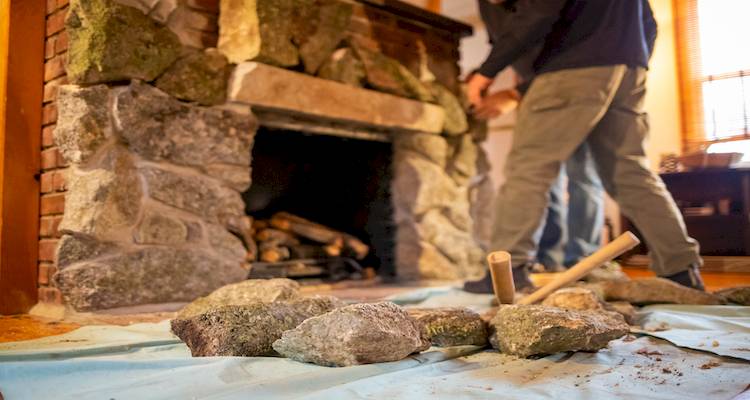
Fireplace Size
If you already have a larger fireplace or are considering installing one, you should expect the cost of this job to be on the higher end of your budget. A larger fireplace will require more labour to remove or install, raising the overall cost.
If you want to keep your costs low when installing a fireplace, you can always go with a smaller model, which is less likely to be expensive than larger models. You will need the fireplace insert and basket, the fires, the surround and mantel, the framing and flashing, and the chimney, flue, and vent to remove a fireplace.
There is a lot of equipment to disassemble and take down. The bigger and more diverse the design, the more labour required to remove it and the more expensive the job.
Fireplace Design
When it comes to installing and removing traditional fireplaces, the process differs from gas or electric fireplaces. Traditional fireplaces do not typically require any cabling or wiring, so this is a step you can skip!
A chimney is required when installing a wood-burning fireplace. It is usually more expensive to install than other options because you must find space in your home for the chimney, and the materials used to install the fireplace insert can be heavy or difficult to work with. However, the procedure for removing a traditional fireplace is relatively simple.
However, the fireplace is likely to be heavy and bulky, making moving them difficult. To prevent water damage, the top of the chimney will be removed or capped.
Location
Pricing is also affected by where you are in the United Kingdom. For example, prices for installing or removing a fireplace in London are two or three times higher than prices in the midlands and northern regions, so be prepared to pay more if you live there.
If you try to hire a contractor who lives outside their usual radius for work, the price could be increased by up to £50 depending on the individual or business, due to the additional travel required to get to your property.
Also, keep in mind that any additional costs for parking or tolls are the homeowner's responsibility.
When I light my log burner, I end up with the bedroom above filling with smoke (the bedroom has an unused original fireplace in it). Can anyone suggest the cause?
Additional New Fireplace Costs
When it comes to installing a new fire, several additional costs are to be considered. The following are some of the additional costs that may be associated with this type of work:
Fire Alarms
The cost of installing a fire alarm is not prohibitively high. The type of alarm primarily determines it and the number required.
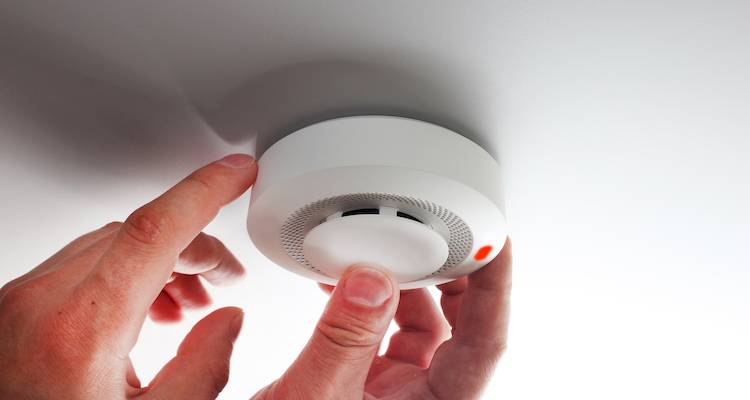
If you only need an additional battery-powered alarm, you can get one for £10 to £15. The cost of installation will range between £40 and £75. Mains-powered alarms are more expensive because an electrician must fit them. The average cost is between £75 and £125, and this fee is charged per alarm.
If you want a smart fire alarm, the price will be higher. A battery-powered alarm will cost between £80 and £100 with installation. The price of a mains-powered smart alarm will be between £105 and £250.
Should I have a smoke alarm and heat detector?
Electrical Safety Certificate
For an average-sized home, the cost of an Electrical Safety Certificate in the UK ranges between £80 and £150. However, the cost will vary based on the job's complexity, among other factors. Nevertheless, every homeowner, including landlords, should recognise the significance of an Electrical Safety Certificate.
Only certified electricians are legally permitted to release an Electrical Safety Certificate, which certifies that all electrical appliances and connectors on the property are in good working order. In most cases, an Electrical Safety Certificate test can be completed in one day or less.
New Gas Supply
In some cases, you may need to purchase a new gas supply for your home. For example, if your home is brand new, it may not have a mains connection installed.
Some older homes may lack a gas supply, or you may be transitioning to a gas supply for central heating. Installing a gas supply at your home will typically cost between £300 and £1,000.
Boiler Service
In addition to your annual gas fire service, you will need an annual boiler service if your boiler is gas-powered.
This is critical to ensuring that your boiler runs efficiently and that all the parts perform optimally. An annual boiler service costs around £50 to £90 on average.
Chimney Repairs
If scaffolding is not required, the average cost to replace leadwork on a chimney is £350 to £460. However, if scaffolding is required, the cost ranges from £700 to £920.
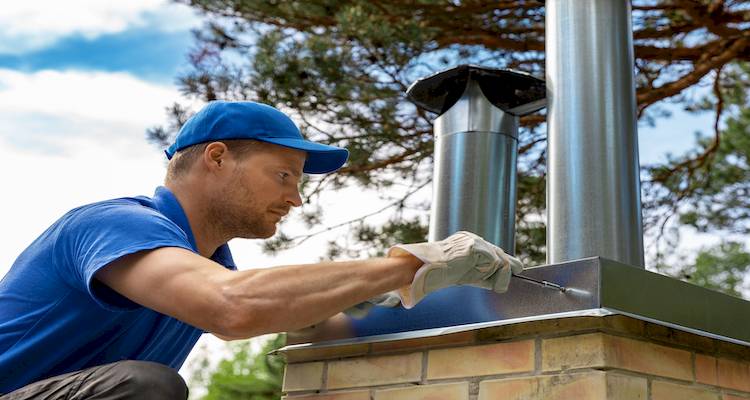
The average cost of removing an entire chimney without the stack is around £2,200 to £2,400, while the average cost of removing a whole chimney stack with the breast is somewhere around £3,000 to £3,500.
A chimney system will cost between £600 and £1,000. The average cost of removing an entire chimney without the stack is around £2,200 to £2,400, while the average cost of removing an entire chimney stack with the breast is around £3,000 to £3,500.
What's Involved in Installing a Fireplace?
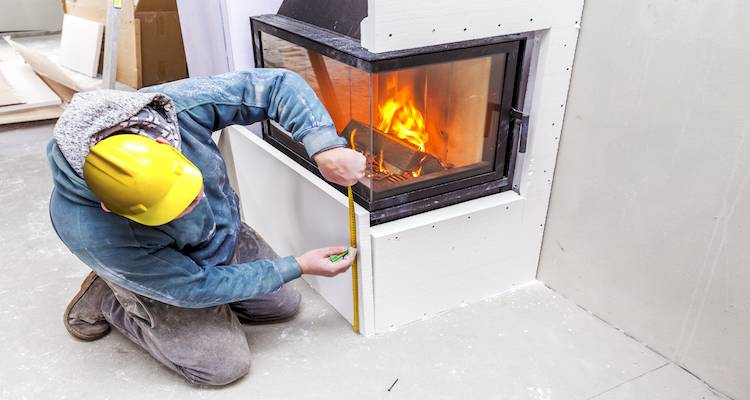
Installing a fire isn't something you should attempt on your own. It's not only dangerous (as it involves gas or electrical connections and potentially deadly carbon monoxide), but it also requires compliance with strict Building Regulations.
Because this isn't a DIY-friendly job, the vast majority of homeowners choose to find and hire a qualified fire installer.
With MyJobQuote, you can get several quotes from fire installers near you which are fast, free, and there is no obligation to go ahead.
Let's take a look at the typical process of getting a fire installed:
Before the Job
- Regulations Explained — Any experienced professional will be able to walk you through the laws and fire regulations for this type of project.
- Chimney is Swept and Inspected — Before installation, your chimney should be swept and pass all necessary inspections.
- New Lining is Installed — A new lining is installed if necessary to ensure the chimney meets current standards.
- Site Assessed — The installer will confirm measurements and assess the installation area to ensure it meets Building Regulations.
During the Job
- Hearth is Installed — The hearth must be installed beforehand to provide a non-combustible base for the fireplace.
- Connections are Run — Gas lines or electrical connections are run to the fireplace location, depending on the type of fire being installed.
- Fireplace is Fitted — After that, the fireplace can be fitted and installed into position.
- Flue is Connected — The flue or ventilation system is connected to allow fumes and gases to escape safely.
- Safety Shields are Installed — All seals and combustible shields are installed to ensure safe distances from flammable materials.
After the Job
- Fire is Tested — The installer will test the fireplace to ensure it's working safely and efficiently.
- Area is Cleaned — All debris is removed, and the installation area is cleaned.
- Operation is Demonstrated — Your installer will demonstrate how to use the fire safely and adequately.
- Certificate is Issued — You'll receive a Gas Safety Certificate (for gas fires) or HETAS Certificate (for solid fuel fires).
- Building Control is Notified — The installer notifies Building Control that the work has been completed in compliance with regulations.
Can I Install a Fireplace Myself?
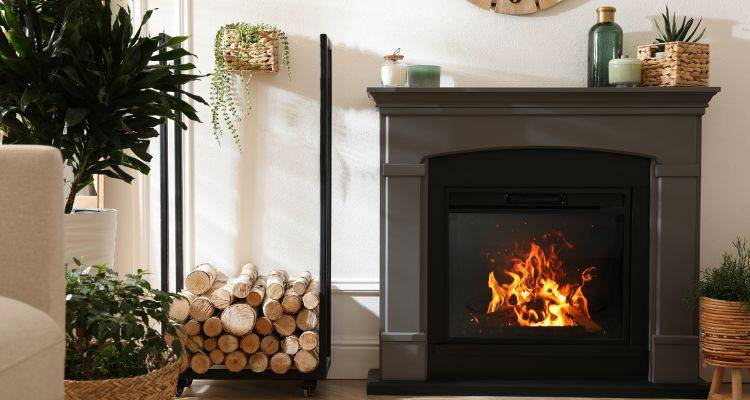
You should not attempt to install a fire yourself as a DIY job. An improperly installed stove may become a fire hazard, but it may also release deadly carbon monoxide into your home, increasing pollution.
Like any other heating appliance, a stove must be installed correctly and follow Building Regulations to keep you and your loved ones safe.
Even before installation, there are several factors to consider with a stove, including the type and heat output (kW) and any changes that may be required to your home to accommodate it. That is why we recommend consulting with a professional before purchasing one.
Installing The Flue Properly
The flue should prevent gases from entering your home. A flue is required for stoves to allow fumes and potentially dangerous gases to escape from the top and not into your room. This contains carbon monoxide, produced when fuel is not properly burned. It is invisible and odourless, making it difficult to detect but lethal.
The flue can be routed through an existing or custom-built chimney or straight up and out of the ceiling. An installer should perform a smoke test to ensure that nothing leaks into the room when inspecting an existing chimney or after installing a flue. If they do not, request that they do so.
The chimney/flue often needs to be sealed off at the bottom with a metal plate and a suitable cowl installed to prevent birds from nesting. We would also suggest purchasing a smoke alarm and a carbon monoxide detector.
Insulating the flue will reduce the risk of a fire. In addition, insulating the flue implies that the gases will be kept warm, preventing condensation.
This will keep tars and creosotes from accumulating in your chimney and catching fire. You should also have your stove and chimney/flue swept and checked regularly to ensure that any deposits are eliminated and that it is not cracked or distorted.
I would like to take my 70's style open fireplace, and turn it into an electric one. The tiles are all broken around it, so would need to be replaced and so does the mantle piece. What would it cost?
Building Regulations & Planning Permission for a Fireplace Installation
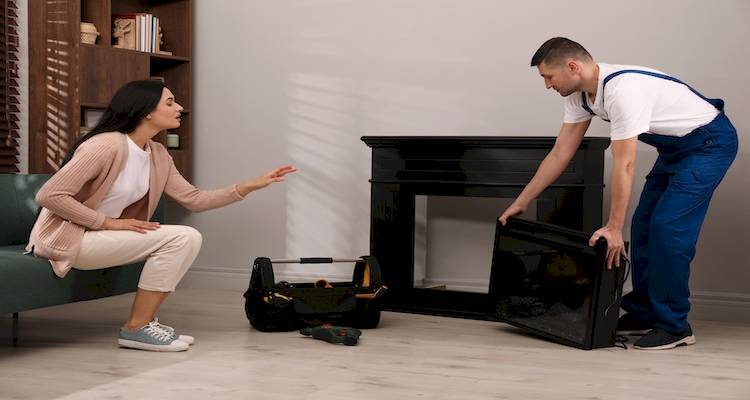
Building Regulations
There's no fixed size requirement in Building Regulations for the fireplace opening. However, it must comply with Approved Document J (Building Standards in Scotland, Technical Booklet L in Northern Ireland) and the appliance manufacturer's specifications.
It must be made of brick or stone with no combustible materials.
Likewise, there are regulations and manufacturer instructions that set minimum air gaps/clearances around a stove once it is in the recess.
Wall Thickness Requirements:
| Wall Type | Thickness Requirement |
|---|---|
| Side walls | Brick or stone, at least 200mm thick |
| Rear wall | 200mm thick (100mm if it's a cavity wall and if there are back-to-back fireplaces in the same building) |
Additional Requirements:
- All stoves should have a hearth, the size of which depends on the fire and location.
- To help the fuel burn without producing dangerous carbon monoxide, the stove's room must also have adequate ventilation.
Any work that installs, alters or relines a chimney/flue is building work, which means you'll need to follow Building Regulations and, where required, notify Building Control.
Summary:
- Before beginning any work, have your chimney swept and checked. Make sure you have a carbon monoxide alarm.
- Have the proper flue size.
- Allow someone who is HETAS registered (solid fuel) or Gas Safe registered (gas) to complete the installation.
Planning Permission
Planning permission is not usually required to install a gas fire. You may need consent if you alter the chimney/external flue, if the property is listed, or you're in a conservation area.
Types of Fireplace Installations
There are many different types of fire to choose from, each with its own set of benefits and drawbacks. Below is a list of the various types of fire that you can get on your own, along with their prices and a list of pros and cons for each type:
Open Front Gas Fireplace Cost
An open-front gas fire has several different controls and can be decorated in various ways. This allows you to select a fireplace that perfectly complements your home's décor. They are warmed by a heat exchanger and expelled through the upper canopy.
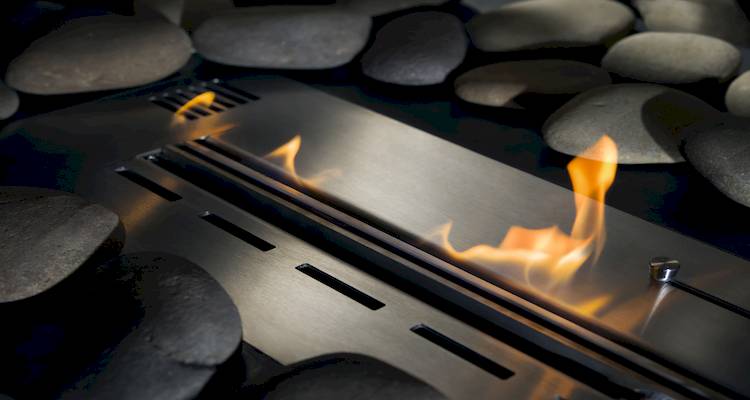
The price is standard, and if you're looking for a cheap gas fire, you could find lower-priced open fronts. They will usually cost between £250 and £400.
Pros
- ✔ Beautiful in appearance, giving a natural, realistic flame.
- ✔ It has a variety of control options and generates no ash or soot.
Cons
- ✖ Less efficient than other types of gas fireplaces, such as sealed fireplaces.
- ✖ No sealing presents a risk of burning or flame exposure.
Living Flame Gas Fireplace Cost
An outset living flame gas fire spreads from the hearth wall. This type of fire produces a lot of heat since the body of the fire heats up and efficiently converts heat around the room. They frequently have a clear glass cover that amplifies warmth and converts cold air into heat, and they can even have a log effect if wanted.
Some even have remote controls, ideal for elderly people or anyone who has trouble bending over. These can range in price from £300 to £700.
Pros
- ✔ Produces a lot of heat and has large, easy-to-use controls.
- ✔ Creates a realistic flame, giving a cosy ambience.
Cons
- ✖ Not as heat efficient as other fireplaces, as they are mostly designed for aesthetic appeal, making them expensive to run.
- ✖ Open flames pose burning risks.
High-Efficiency Gas Fireplace with Glass Frontage Cost
A glass-fronted high-efficiency fire will typically have an efficiency rating of 80-90 per cent. This type of fire employs technology to improve energy efficiency beyond a standard gas fire. High-efficiency gas fires with glass fronts are built into the property's wall and force heat out through the glass front.
These are slightly more expensive, with prices ranging from £800 to £1,500.
Pros
- ✔ Extremely effective with great heat efficiency, helping to prevent heat loss.
- ✔ Lower running costs compared to open fires as the fuel is being used efficiently.
Cons
- ✖ High up-front installation costs.
- ✖ The appearance might not be as realistic as other fireplace variants.
Gas Fireplace with No Flue Cost
Flueless fires are intended for people who do not have a chimney in their homes. This is a clean-burning appliance with a built-in catalytic converter. This catalytic converter reduces the emission that passes through it and removes any toxic gases before safely releasing them into the atmosphere.
The price ranges from £500 to £1,000.
Pros
- ✔ Easy installation as no chimney or flue is required.
- ✔ Very effective with good heat efficiency, with lower running costs compared to open fires.
Cons
- ✖ The release of safe air is dependent on a catalytic converter.
- ✖ Can lead to damp issues over time.
Gas Fireplace with Balanced Flue Cost
A balanced flue fire is intended for homeowners who want all the advantages of a gas fireplace but do not have a chimney or flue constructed into their home. Instead, this type of fire has a flue that runs through an exterior wall.
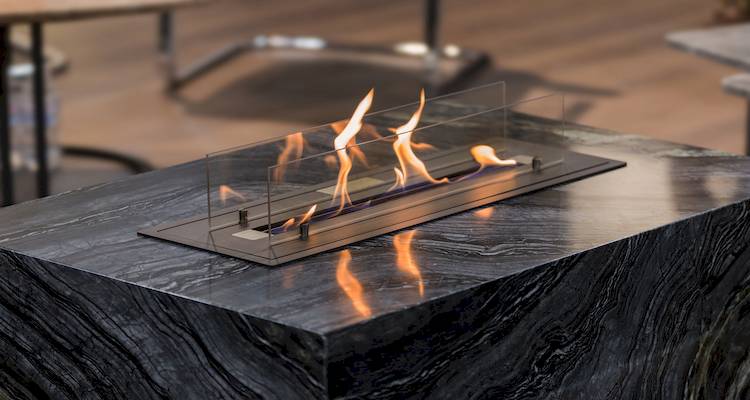
Pros
- ✔ Allows you to have a fire without requiring a chimney.
- ✔ Extremely effective with a high heat output.
Cons
- ✖ It could be difficult to install, with higher installation costs as a result.
- ✖ These fires can look less realistic than some other options.
Electric Fireplace Cost
Electric fireplaces are typically less expensive than gas fireplaces, and this could be the best choice for you if you're on a tight budget. However, they frequently have higher long-term operating costs because they use electricity rather than cheaper fuels like gas.
Pros
- ✔ Purchasing upfront is less expensive and is simple to set up.
- ✔ They are available in a variety of styles.
Cons
- ✖ Long-term operating costs are higher, and heat output may be limited.
- ✖ Electric fires are dependent on electricity - if there's a power cut, you won't be able to use it.
Checklist: Hiring a Fireplace Installer in the UK
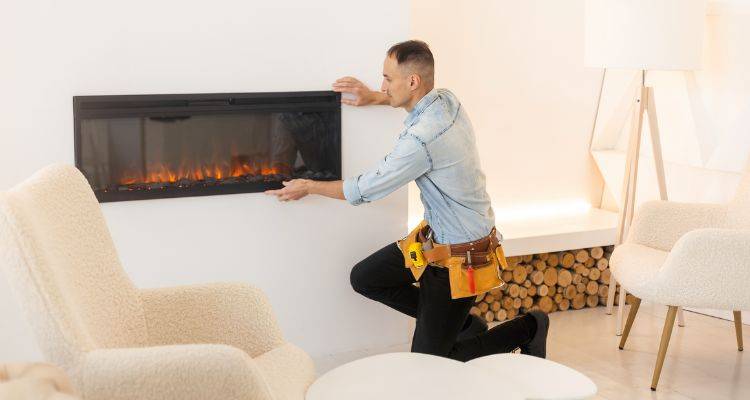
Ready to install a new fire? Here’s what to keep in mind when hiring a professional installer to ensure the job is done safely and legally.
- Are they qualified for the job? This is the most important check. For gas fires, the engineer must be on the Gas Safe Register. For wood, solid fuel, or biomass stoves, look for an installer registered with HETAS. Always ask to see their official ID card.
- Are they insured? Ask to see proof of their public liability insurance. This is essential to cover you and your property in the unlikely event of accidental damage during the installation.
- Do they understand building regulations? A competent installer will have expert knowledge of UK Building Regulations (Approved Document J) covering ventilation, flue requirements, hearth specifications, and safe distances to combustible materials.
- Have they provided a detailed written quote? Don't accept a verbal estimate. Ask for an itemised quote that breaks down all costs, including the fire appliance, flue liner (if needed), hearth, labour, and VAT.
- Will they provide a certificate of compliance? This is a legal requirement. A Gas Safe engineer must provide you with a Gas Safety Certificate. A HETAS installer will issue a HETAS Certificate of Compliance, which is used to notify your local council's building control department.
- What warranty is included? Check the manufacturer's warranty for the fire appliance itself and ask what guarantee the installer offers for their workmanship.
- Can they provide references and a portfolio? Request to see photos of previous installations and speak to past clients if possible. You can also check their MyJobQuote profile to read verified reviews, see ratings, and view their past work.
Following these steps will help you choose a qualified, fully insured fire installer with a proven track record, ensuring your new fireplace is safe, compliant, and installed to the highest standard.



